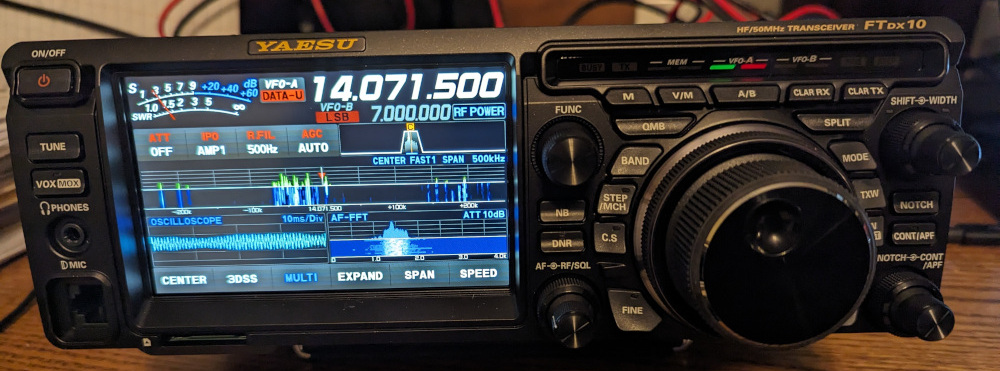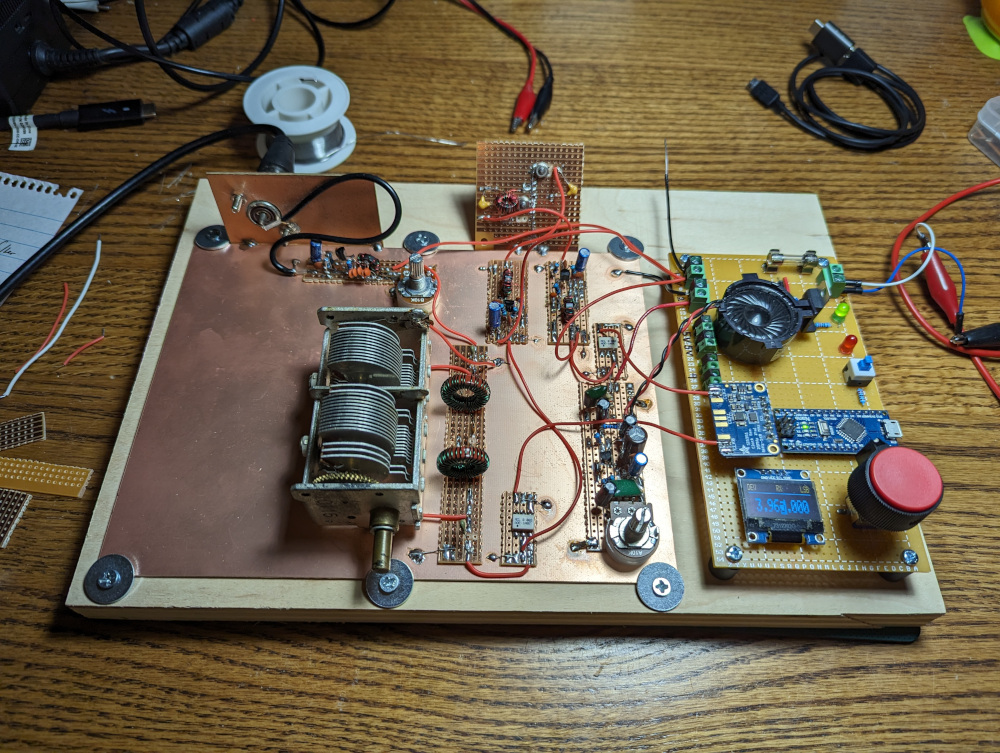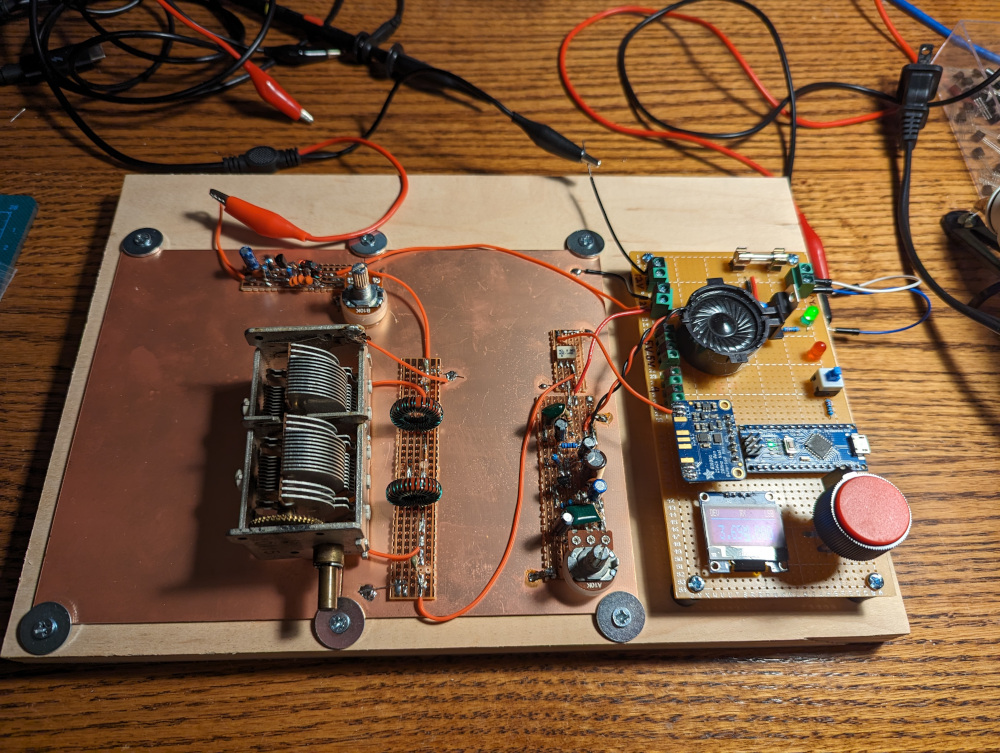I am currently in the process of building an 80 meter SSB rig modeled off of a series of ZL2CTM’s homebrew videos. I’ve added in some relays for transmit/receive switching and added a multi-stage power amplifier, the schematics of which are below.
I mostly copied Charlie’s work, but I substituted a handful of components for things I had on hand. The schematics below show the values that I used, but Charlie’s version had better performance than mine, so I’d suggest watching his videos if you want to follow along.
Over the weekend, I continued working on my homebrew 80 metter SSB rig, but I ran into a few issues. While working on the output amplifier, I ended up burning out multiple resistors, trimpots, diodes, and transistors. I was getting frustrated, but luckily, a package arrived that shifted my attention.
My new FTDX10.
I made a few contacts on FT8 and I was able to successfully decode Olivia on 20 meters, but thunderstorms started to roll in, so I jumped off before I could join in the conversation.
This past weekend, Atlanta hosted the return of the Southern Fried Gaming Expo and Vintage Computer Festival Southeast. We had fun there last year, so we loaded up the family and made the trip again.
This year seemed a lot bigger than last year. I’m guessing last year was still coming off of COVID, so things were a little more calm. This year, there were tons of people and there was a lot more to do and see.
Some time ago, I purchased an RF board off of ebay for a few bucks so I could repurpose the crystal filters. I figured that I’d use them someday and I guess today is that day.
Below is a picture of the board as I received it.
There were three German KVG filters, an XF-9 S 42, and XF-9 S 43, and an XF-9 S 44. The S 42 filter is an AM/DSB filter, the S 43 is LSB, and the S 44 is USB.
I started a new project using my new radio development platform. I’m following along with one of ZL2CTM’s builds, specifically, this one, so if you are looking for a how-to, you would probably be better served watching his videos. This is mostly just a build log for myself.
I’m making this radio for 80 meters and I’m tweaking it a little, mainly due to parts availability in my junk box.
Most of my homebrew radio projects always end up devolving into a mess boards that are haphazardly soldered together, so I figured it’s time to change that.
I’ve been re-watching some of Charlie Morris' youtube videos and I’ve always liked his modular approach, so I tried to mimic it by putting together a sort of development platform for homebrewing radios.
I built up a permanent board with a power management section, a VFO made with an Arduino Nano, SI5351, LCD, and rotary encoder and mounted it on a piece of plywood.





